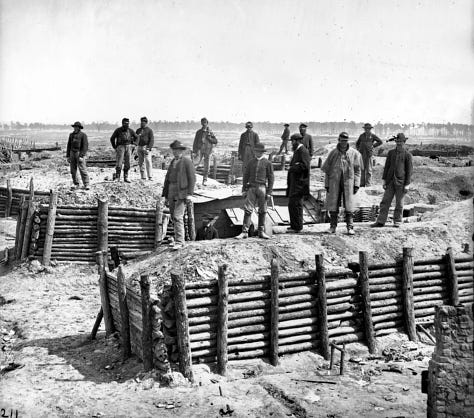
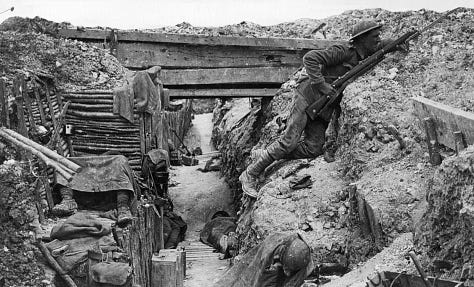
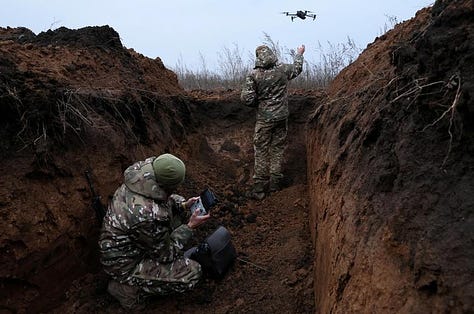
In every age there are those who will seek to make the case that humans now, unlike their predecessors, are more enlightened and less likely to stumble into war. Whether it is Norman Angell writing in The Great Illusion before the First World War, or more modern voices like Stephen Pinker, there will always be those who propose that human beings will no longer need to make war on each other.
Despite the best intentions of such writings, the reality is that our future is more likely to resemble the past. As Colin Gray writes in Strategy and Defence Planning, “It is a reasonable assumption that future strategic history will resemble the past and present. Because it rests upon the evidence of 2500 years, this is not a recklessly bold claim.”
There are many continuities in war.
Indeed, every new war is an aggregation of the ideas, institutions, technologies, and techniques that have preceded it. If we peer close enough, we can see the different historical layers that inform, shape, and sometimes strangle the effectiveness of military organisations. In the Russo-Ukraine War, we have witnessed many continuities from previous wars carry through into the strategy, diplomacy, and military operations of both sides. For the purposes of this article, I have highlighted five important continuities: war as a human endeavor; surprise; alliances; the need for good strategy; and leadership.
War is a continuity in human affairs. Perhaps the most important continuity is that human competition is an enduring element of our existence on this planet. It may recede at times, such as in the wake of the Cold War. But war is a constant feature of the interplay of nations, groups of nations, and non-state entities. Perhaps the most important lesson from the past year of war in Ukraine is that there are still those who believe war is the best way to get what they want.
This is an old idea, as ancient as the existence of human societies. There are always those who want what others have. And whether it is war for more lands, more wealth or conflict over the kinds of senseless historical narratives espoused by Putin in the past year, there will always be leaders who cannot be deterred and who see war as a valid course of action in international affairs.
At the same time, this war like all others before it will be settled on the ground. While the air, sea, cyber and space domains are vital elements of strategy and combat, it is on the ground where the population lives, where territory is taken or held, where soldiers fight and where politicians set objectives and negotiate the termination of wars.
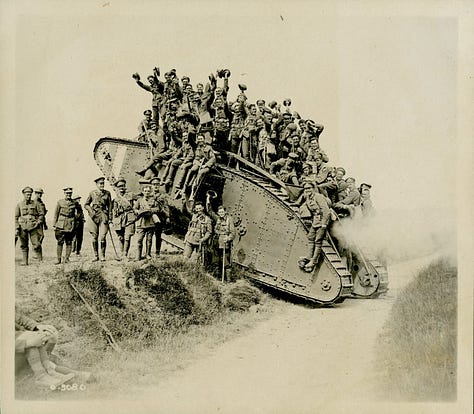
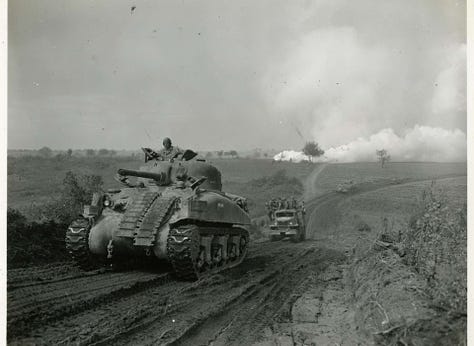
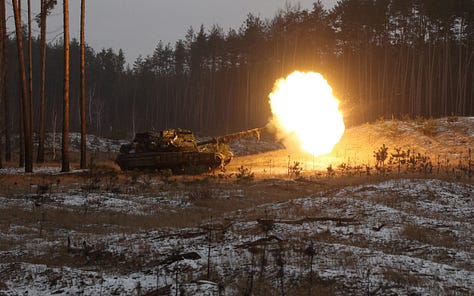
Surprise. Another continuity in war is surprise. This is usually defined as striking at a place, time or location in a manner for which an adversary is not prepared. British strategist and academic, Sir Lawrence Freedman, writes that “a surprise attack, conceived with cunning, prepared with duplicity and executed with ruthlessness, provides international history with its most melodramatic moments.”
Surprise, which is embraced in the Western and Eastern traditions of war, aims to shock an adversary and overwhelm them when they are their weakest, or when they least expect it. Throughout the writings of ancient historians such as Thucydides, Polybius, and Herodotus there are multiple examples of one belligerent gaining victory – or at least a decisive advantage - through surprise.
There have many surprises over the past year in the Russo-Ukraine War. Most have been surprised by Russian incompetence; pre-war studies of Russian reform did not comprehend the full range of weaknesses in the Russian military. The West (and the Russians) have been surprised by the resilience and commitment of alliances like NATO and other institutions such as the European Union in their ongoing support for Ukraine. Events such as the attack on the Kerch Bridge and the Ukrainian drone boat attack on Sevastopol were also tactical surprises.
And we have been surprised by the offensives conducted by the Ukrainian Armed Forces that have defeated the Russians on the battlefield north of Kyiv, in Kherson and in Kharkiv. No matter how sophisticated or advanced our military and intelligence organisations might be, and how good sensor and information dissemination networks might be, the agency of human beings and their desire to surprise their adversaries remains constant. Clausewitz described this as friction, the difference between the theory and practice of war.
Alliances and Ukraine. A third continuity is the importance of alliances. Throughout history, clever tribal leaders and statesmen have increased their military potential by entering into partnerships and alliances with their neighbors. Good examples of this include the alliance system which eventually defeated Napoleon and the alliance which defeated the forces of fascism in the Second World War.
Alliances are also essential in the 21st century security environment. A moribund NATO has been infused with energy and purpose since 24 February 2022. While Ukraine is not a member of NATO, and the alliance has stopped short of deploying forces to Ukraine, it has demonstrated a resolve that had been absent before now.
NATO has become the right organisation with the right members at the right time to provide moral sustenance, material, intelligence, training and other forms of support to the sturdy Ukrainian defenders. It is a demonstration of why alliances – with the right purpose - remain an important part of how the West achieves collective defence for their sovereignty, prosperity and for democracy ideals more broadly.
Good strategy matters. Strategy is a term for which there is no agreed definition. However, at heart it is about aligning national objectives with the means and ends to achieve those objectives. Sir Lawrence Freedman in his 2013 book called Strategy: A History writes that “it only really comes into play when elements of conflict are present”. The late Colin Gray perhaps described it best when he described it in The Future of Strategy as “a bridge between purpose and action”.
The war in Ukraine offers academics, politicians, military leaders and civil servants an abundance of observations on the development and execution of strategy from the perspectives of the Ukrainians, Russians, Americans and others. There are many examples of effective strategy development and its implementation from the war. There are also examples of poor strategy.
Assumptions matter in strategy, and the Russians have so far failed in this regard. They assumed, broadly, that the Ukrainians would not fight for long, that their government would collapse, that Ukraine was not a unified state and that the West would not decisively intervene. These failures in strategy and the assumptions that underpinned them have had catastrophic consequences for both Russians and Ukrainians.
At the same time, the Ukrainians have proven to be outstanding at integrating all of their national assets into a single unified strategy to repel the Russian invasion. Their strategy of corrosion has attacked all elements of Russian fighting power: physical, intellectual and moral. Whether it is their military operations, information operations, the mobilisation and unification of their people or the solicitation of massive aid from the West, the Ukrainians have proven to be very competent strategists. They are certainly better at it than the Russians. And in war, that can be the difference between national survival and extinction.
Leadership. There is a final and important continuity. The war in Ukraine has shown (again) that ambiguity and uncertainty are key features of the international system. Because of this, we will also keep being surprised (see continuity no. 2 above) across many aspects of national security.
The best way to respond to surprise is good leadership. This has been on display – most compellingly – from Volodymyr Zelensky. The Ukrainian president has shown courage, empathy and led those who need him most – the Ukrainian people. He has also reignited an understanding that freedom must be defended.
Zelensky’s determination and energy - supported by the time bought on the battlefield by his soldiers – has seen the construction of an immense international regime of sanctions against Russia. It has also resulted in a large and continuing amount of military and economic assistance to Ukraine, and an outpouring of moral and diplomatic support from many nations.
Zelensky’s words “I don’t need a ride, I need ammunition” electrified his people and his soldiers. In the past year we have seen the birth of someone who has become a very fine wartime leader. As I wrote early in this conflict, many national leaders in the West have looked at themselves in the mirror in the past two weeks and wondered if they could meet the extraordinarily high standard of leadership set by Zelensky.
But over the past 12 months we have also witnessed the impact of good combat leadership has. On the one side, the western trained and oriented Ukrainians have prepared their junior leaders – senior soldiers, non-commissioned and officers – to take the initiative and lead their soldiers by example. The Ukrainian military leadership, with General Zaluzhnyi at the top, clearly wargamed this war in advance. They have superbly prepared, deployed and led its forces to defeat the Russians in the north, south and east. And to prepare them for the campaigns to come.
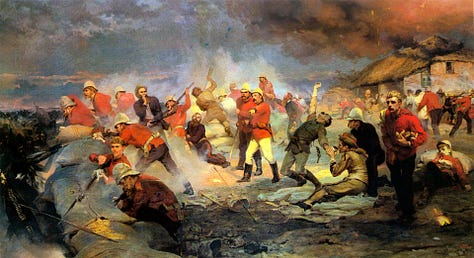
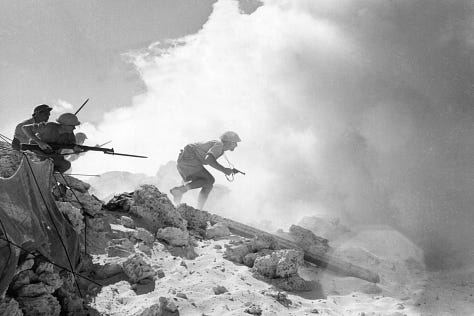
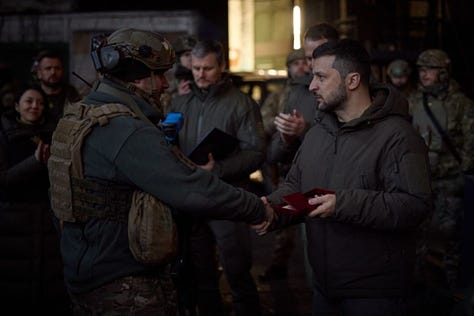
The Russians have demonstrated terrible battlefield leadership at every level. Rob Johnson recently described the Russian approach to their invasion as Dysfunctional Warfare. The Russian high command initially decided to fight multiple separate ground wars in the south, east and north – as well as an air war – without a unified command structure. At the lower levels, they have been professionally incompetent – they have committed forces piecemeal, failed to provide logistic support or properly equip many mobilised soldiers, and as a recent RUSI report describes, have constantly reinforced failure, doing the same things over and over expecting different outcomes. They have failed at combined arms and air-land integration.
But even worse, they have deliberately targeted civilians, not as accidents, but as a systemic campaign to kill and terrorise Ukrainian civilians as part of their denazification dogma. The massacres at Bucha, Mariupol and beyond have been systemic and not the result of a few bad apples. It also represents the most repulsive form of leadership and human conduct.
Other continuities. There are many other continuities that might also be explored. For example, industrial-scale warfare has re-emerged from the 20th-century history books to plague our young 21st century. This has been a very unwelcome development for democratic governments that have reduced their large military institutions since the end of the last Cold War. This resulted in countries such as America, Britain and others drawing down on war stocks of precision munitions to support Ukraine in a way that now threatens their own capacity to respond to other contingencies.
A final continuity might involve technology and humans. There has been a desire by many commentators to find a breakthrough technology in this war that would equip Ukraine with a decisive advantage over the Russians. Whether it was Javelins in March 2022, or the June 2022 dispatch of HIMARS artillery rockets, the search for technological silver bullets has been a constant feature of this war and those that have gone before.
The reality, proven by thousands of years of human conflict, is that there is no such thing. Machines do not plan, fight or win wars; humans do. This war has offered multiple observations on the human ingenuity, teamwork and leadership that remains the key to success in deterring, and winning, wars. This too is an important continuity.
Very Little in this War is New
There is very little new in this war. That may shock some, particularly given the impact of autonomous systems or new era strategic influence mechanisms. These, and other new aspects of war will be explored in the next part of this series.
However, the reality is that this war would be entirely recognisable to a soldier from the eastern or western fronts in Europe in World War Two. Many aspects – trench warfare, hunger, fear, good and bad leadership – would be recognisable to soldiers much further back in time.
There is a reason this is so. Military institutions, despite the traditions and conservative cultures that often get in the way of change, are the masters of encoding behaviours, techniques and incentive structures that work on the battlefield. For the most part, this is good because it ensures that doctrine training institutions can prepare people for battle according to tried-and-true methods. And while the negative impact of sticking with the ‘tried and true’ is that it imposes a higher burden of proof on those wanting to change military institutions (believe me, it is really hard), it does provide for an essential level of institutional survivability that underpins learning and adaptation.
There has been a tremendous amount of continuity in this war from previous conflicts. Understanding this is important. This knowledge provides the essential foundation for recognising where change does occur. It also underpins learning and understanding how and when to adapt tactics, organisations, strategy and equipment. The changes that result of this process, from the past year, will be focus of the next part in this Year of War series.
This article is the first of a three part series to be published in the lead up to the commemoration of one year since Russia commenced its latest invasion of Ukraine. Subsequent articles (on 21 and 22 February) will explore changes in the conduct of war as a result of the past year, and asymmetries that have developed between Ukraine and Russia stemming from their learning and adaptation since 24 February 2022.




❤️
❤️❤️❤️